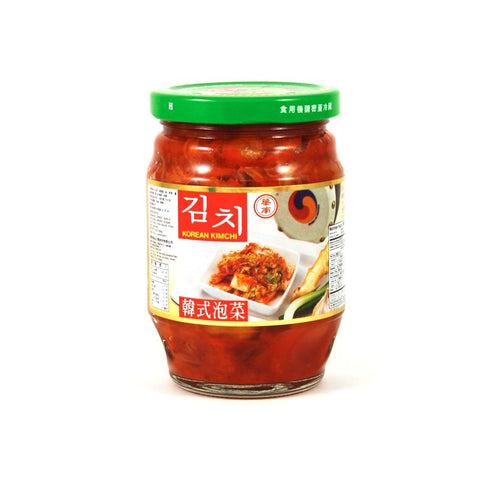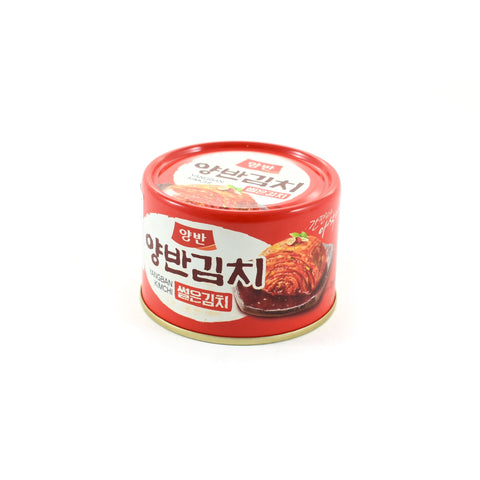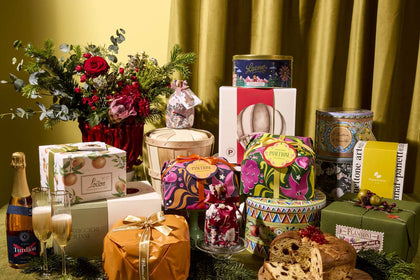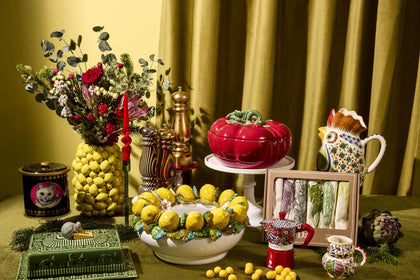Everything You Need To Know About Kimchi
by Ellie Edwards

What is kimchi?
Kimchi is the Korean national food that’s eaten alongside almost every meal. The spicy condiment is made from fermented vegetables, the most common one being napa cabbage. Fermenting is a safe and low-tech way of preserving food that may have otherwise gone to waste. Lactic acid fermentation is the process behind making kimchi. During this process, bacteria converts carbohydrates into lactic acid and carbon dioxide.
The origins of kimchi go right back to around 37BC – surviving Chinese records of the time indicate that the Korean people were already skilled in making pickled and fermented foods to make sure none of their harvest went to waste.
What is kimchi made of?
Traditionally kimchi is made of finely sliced cabbages and white radishes which are then layered with Korean sea salt, gochugaru – Korean red pepper powder – garlic, ginger, spring onions and anchovy sauce. This is the basic combination, but recipes vary in different parts of the country and also from household to household. Vegetarian and vegan varieties of kimchi are available - these replace fish sauce with sugar and salt.
How to cook with kimchi?
The most popular use of kimchi is to serve it as a side to main dishes, from rice bowls to noodle stir fries to fried eggs. You can also use kimchi as a filling for savoury pancakes, steamed buns or add a spoonful to the top of burgers and hotdogs.
Exciting recipes using kimchi

Follow our step-by-step guide to making your own kimchi, with advice on what vegetables to use and how long to ferment it for.

Genevieve Taylor's tofu burger is layered with kimchi and finished with a generous drizzle of sriracha.
Kimchi Potatoes

"Kimchi Royals are our version of patatas bravas, via Korea. Instead of salsa you have kimchi and there’s Japanese mayonnaise rather than allioli." says chef Ravinder Bhogal.
Kimchi Pancakes

Savoury pancakes are a staple of Korean street food markets. The batter here is mixed with kimchi for a lovely chilli kick.
Kimchi Hotdog

When you taste a hot dog with kimchi, you’ll understand why it’s such a good pairing. Perfect with a cool, crisp beer!
Kimchi Salad

An incredibly simple salad of shredded vegetables, that really showcases the umami heat of kimchi. Choose your favourite veg!
Kimchi Wang Mandu Dumplings

Try this classic Korean street food recipe, from the fantastic K-Food cookbook. Filled with kimchi, sweet potato noodles, minced pork and tofu.
What are the different kimchis I can buy?
Kimchi is a spicy, pungent condiment made from fermented vegetables. It’s a staple of Korean cuisine, and many families make their own. The easiest and most popular way to use kimchi is to simply serve it in its own dish alongside a main meal. Other common ways to use kimchi include stirring it through plain noodles or rice, or as a filling for Korean savoury pancakes or steamed buns.
Yutaka vegan Korean kimchi is made without the traditional addition of fish sauce, and has a 100% natural ingredient list. The kimchi is seasoned with red pepper chilli powder, fermented cabbage and a hint of ginger.
Frequently Asked Questions
Is kimchi supposed to be soft or crunchy?
As kimchi is made with cabbage, the texture should be crunchy, with a tangy, spicy, sour flavour. Any homemade pickle should have a pleasing and refreshing crunch. It shouldn’t be hard or woody and it certainly shouldn’t be slimy. Read Thom Eagle’s guide to pickling at home for more expert advice.
Is kimchi always spicy?
No, kimchi isn’t always spicy. The levels of spice will vary from brand to brand, and if you make your own kimchi, you can choose how much red pepper powder to add. In our homemade kimchi recipe we suggest 10g, and up to 25g if you like it very hot!
Why is kimchi so good for you?
Kimchi is a fermented food, and there is evidence to show that eating ‘live’ foods can boost the levels of good bacteria in the gut. The process of fermentation also creates new nutrients including vitamin B, folic acid and biotin - another reason why kimchi is so good for you.
Is it okay to eat kimchi everyday?
Yes! A side of kimchi everyday is okay to eat. However, if you are not used to eating fermented foods, it’s a good idea to introduce them into your diet slowly as the gas can cause bloating. Kimchi also contains high levels of salt which is worth noting if you’re following a low-sodium diet.
Shop all Korean ingredients here, and read our ultimate guide to fermented foods here.

About the author
Ellie Edwards is a food writer for Sous Chef. Previously she worked at olive magazine, writing about exciting new ingredients, UK restaurants and travelling the world to find the best cinnamon buns. When she's not exploring the likes of Belize, Kerala and Zanzibar, Ellie loves rustling up a feast in her London kitchen, with a particular passion for porridge, sourdough and negronis.




